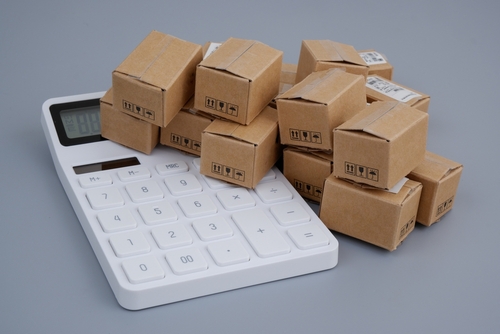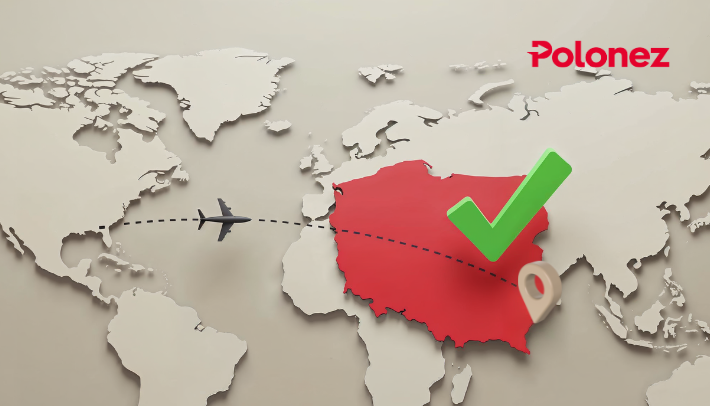May 5, 2025
Documents, Rules, and International Shipping to Poland

International shipping to Poland and sending documents overseas isn’t as simple as throwing a stamp on an envelope. Maybe you have to send a legal contract or a birth certificate.
Each task comes with its own checklist, as countries often have different customs rules. Papers that seem routine could get tangled in red tape.
Today, digital transfers now play a bigger part than ever before. Some shipments need official stamps or signatures to prove authenticity, and sometimes a basic letter skips past scrutiny while a folder of business records triggers inspections. Everything hinges on whether the papers count as goods or just correspondence.
A missed detail might stall your delivery for weeks or even spark legal trouble. Knowing these pitfalls saves time and stress, which means you should choose the right path for every document. Stay alert, double-check your steps, and you’ll boost the odds your envelope lands safely in the right hands.
“To know which documents are needed for an export shipment, the best place to start is your foreign customer/importer or a freight forwarder,” states U.S. International Trade Administration. “By obtaining correct information, you are helping your customer efficiently clear the goods with customs in the target market.”
Customs, Paper Documents, and International Shipping to Poland
Sending papers across borders via international shipping to Poland gets tricky fast. Definitions change from one courier to another. Your “letter” could become “business papers” with extra forms needed.
One consolidated shipper or mailing service might ask for details that another provider skips. You could end up with delays or have your envelope sent back. Some customers’ thesis papers or other highly important documents have gotten stuck at customs for a week or more just because one page looked too official.
Don't guess. Check with your shipping company every single time, as a simple question can help you avoid hassles later. Save yourself the headache and double-check before sealing that envelope.
“Does your company plan to import goods from outside the EU?,” asks the experts at the European Commission's Trade and Economic Security Department. “This section helps you understand if your company is ready to import, and outlines the different steps of the import process.”
Accompanying Goods and the Polish VAT
Paperwork riding along with international shipping to Poland faces extra checks. Customs officers look at each detail since they want to see that invoices, packing lists, and certificates match exactly. The European Union rules come into play fast, too.
You’ll need a six-digit Harmonized System (HS) code, and you must write down where your goods come from. Selling as a company means you probably need an EORI number, or Economic Operator Registration and Identification number. A rule change since July 2021 ended Value Added Tax (VAT) breaks for many imports, so most packages now get hit with VAT.
VAT is worked out from the goods’ value, insurance, and shipping cost all added together. If you forget this fee, your buyer could get hit with a big surprise bill. Sometimes parcels even get stuck at customs.
Missing one detail risks a lot. Write everything clearly, and double-check every number. It saves you from headaches later.
Authentication: Apostille, Notarization, and International Shipping to Poland
To get your U.S. papers officially accepted with respect to international shipping to Poland, you need an apostille. Poland, as a member of the Hague Apostille Convention, asks for this stamp to prove your document is genuine.
The apostille shows the signature is real, confirms the signer's job title, and matches any stamp or seal. You usually have to ask the secretary of state in the state where your document comes from. Each state has fees for apostille services, and sometimes it takes a while – so plan ahead.
Documents like birth or marriage certificates, diplomas, and powers of attorney often need this stamp for use in Poland. Poland can have some extra steps depending on your situation.
If you want to bring your belongings, customs officers may want a notary service in Poland to confirm your passport copy is real. Sending a contract alone is handled differently from sending documents as part of your belongings.
Poland accepts both digital signatures and apostilles on paper, depending on the case. This can get complicated depending on the circumstance at hand. Professional help usually makes things easier.
Changes in Legal Validity of Electronic Signatures
Over several years, everything about how we handle documents has changed as it relates to international shipping to Poland. Sending files across borders is now fast and easy.
In Poland, electronic signatures have held legal status since 2001. Being part of the European Union, the country of Poland sticks to eIDAS rules (electronic Identification, Authentication and Trust Services). These rules keep things consistent for all countries in the EU.
There are three types of electronic signatures, with the simplest version working like a digital stamp of agreement. Then comes the Advanced Electronic Signature. This one links directly to the person signing, confirms their identity, and spots changes if someone tampers with it.
At the top sits the Qualified Electronic Signature. It goes through extra checks by certified providers. Polish law treats this like signing a contract with pen and paper, if everyone agrees to go digital.
The entire system is easier today. Years ago, many residents, consumers, shippers, and small business owners had to mail contracts abroad and wait for weeks.
Now, a few clicks get the job done. It’s wild how quickly things move.
Breakdown of Documents and Descriptions
Here’s a table that sums up today’s modern system and answers a lot of questions that come up:
|
Document Name |
Description |
|
Pro Forma Invoice |
Used as a negotiating tool before shipment, this document is a declaration by the seller to provide products/services at a specified date and price, detailing quantity, price, weight, and kind of goods. It eventually becomes the final commercial invoice. |
|
Commercial Invoice |
A legal document between the exporter and the foreign buyer that clearly states the goods being sold and the amount due. It serves as a bill for the goods and is a primary document for customs to determine duties. |
|
Packing List |
More detailed than a domestic packing list, it itemizes quantity, description, package type, number of packages, total net/gross weight, package marks, and dimensions. It also lists seller, buyer, shipper, invoice number, shipment date, mode of transport, and carrier. Used by customs officials to check cargo. |
|
Certification of Origin |
A signed statement confirming the origin of the export item, often required by some countries and usually validated by a semi-official organization like a local chamber of commerce. |
|
Air Waybill |
Required for air freight shipments, this document accompanies goods shipped by an international air carrier, providing detailed information about the shipment and allowing tracking. Air waybills are shipper-specific and non-negotiable. |
|
Bill of Lading |
A contract between the owner of the goods and the carrier. For ocean shipments, there are straight (non-negotiable) and negotiable (shipper's order) bills of lading. The latter can be used to buy, sell, or trade goods in transit, with the customer typically needing an original to take possession of the goods. |
|
Electronic Export Information (EEI) |
Required to be filed through the Automated Export System (AES) for most exports of physical goods when the value of the commodity under each Schedule B number is over $2,500, or if an export license is required. |
|
Export Licenses |
Government documents that authorize the export of specific goods in specific quantities to a particular destination for a particular end-use. These may be required for certain countries or under special circumstances. |
|
Destination Control Statement (DCS) |
Required for exports of items on the Commerce Control List (outside of EAR99) or controlled under ITAR. It appears on the commercial invoice, ocean bill of lading, or airway bill to notify parties that the item can only be exported to certain destinations. |
International Shipping to Poland: Signature Rules and Limitations
Most people trust electronic signatures these days when it comes to international shipping to Poland. Still, you can't use just any tool for every document. Some papers in Poland need a special kind of signature because of their legal weight.
Take human resources documents covered by civil law, for example. These demand the highest level of digital sign-off — a Qualified Electronic Signature, or QES. Licenses for industrial property rights fall into the same category.
So do official declarations that legally need to be in writing and transfers of those rights. QES is the gold standard there.
Other paperwork won't let you go digital at all. Big transactions like buying property still need that old-school handwritten sign-off. Shareholder contracts, job agreements, benefits paperwork, official terminations, or any major government letters all stick with the pen for a reason.
Forming some types of companies or transferring shares isn’t going digital either.
A lot of folks think tools like DocuSign or AdobeSign come with qualified certificates, but they don’t. These platforms work for many things, but their signatures aren’t QES. Poland’s own “Podpis Zaufany” is popular for public authority matters, but it doesn’t count as QES.
Knowing which sign-off works for which document saves trouble down the line. Choosing the right signature really matters if you want everything above board.
Secure Physical and Digital Transfer Methods
You want every page of important documents within your international shipping to Poland to land in the right hands, still crisp and untouched. For paper deliveries, your packaging choice is actually your first line of defense.
Go for envelopes that are tough, hard to open without showing it, with strong adhesives and lined interiors. If you’re dealing with bigger packets or something heavy, those double-thick cardboard boxes do the trick.
Nobody wants their papers visible through the wrapping. Pick opaque bags to hide what’s inside. Small files or single sheets sit neatly in stiff plastic sleeves, keeping them dry and straight. Always seal your parcels tight with tape that shows if someone tried to get in.
Do you have bulk shipments? Group and label everything inside, then shrink-wrap pallets so stuff won’t wander during transit.
Not every box fits every document. A snug fit saves money on shipping. Lighter yet sturdy packaging means you don’t pay for wasted space or weight.
Shipping itself deserves close thought. Courier companies bring speed and good tracking to the table; you can watch your shipment move in real time. Registered mail gives physical proof, with records showing exactly when and where your parcel moved.
You should always take the extra step with delivery confirmation so you know exactly who took receipt of your shipment.
Sending files online might seem easier, but security matters even more. Secure transfer protocols like FTPS (File Transfer Protocol Secure) standards or encrypted websites such as HTTPS protect documents in transit.
Many email services offer encryption, though sometimes you’ll need extra plugins. Trusted cloud services hide files both when saved and being shared.
For the strongest shield, use end-to-end encryption. A VPN, or Virtual Private Network, adds another safety net.
Multi-factor authentication can be frustrating but stops most unwanted access. People put huge trust in the safety of their private information, so it’s worth getting these steps right.
Insurance, Relocation Documents, and International Shipping to Poland FAQs
The topic of insurance comes up when sending important papers and considering international shipping to Poland. It usually covers the cost to replace them but stops there.
Losing a signed contract can cause trouble, as there are no payout fixes. The real value often goes beyond numbers. Once lost, memories or business deals can’t be replaced by money alone.
Since packing carefully is the best move, you should use tamper-evident envelopes. Make sure to track every step in the journey.
Also, require signatures on delivery. These steps help stop problems before they start. Sometimes, the safest bet is to use secure electronic options if the law allows.
Are you moving to Poland with your belongings and personal items? You might get a tax break. The European Union lets you bring used household items if you qualify.
Usually, you must prove you lived outside the EU for a year. Just make sure that you prove how you now live in Poland. List all your belongings for customs, and use Polish or English if possible.
Bring your passport, visa, and all paperwork. Since timing matters, get your items in within a year of moving. New, unopened items may face taxes.
What about sending packages to Poland? Quick shipping gets your parcel there in two to six days, and more economical-budget conscious options take over a week. Paperwork requirements differ. Double-check with your carrier so you don’t miss steps.
Need to prove documents are real for Poland? Get an apostille, as mentioned above. Electronic signatures can work in many cases. For some legal needs, only a Qualified Electronic Signature counts, which most popular e-signature tools don’t give you.
Delays at customs happen for simple reasons. Vague or unfinished paperwork, and missing permits, can hold things up. Decide ahead who pays the taxes, but know the sender stays on the hook if there’s trouble.
If you sustain a damaged shipment, contact your courier fast and collect everything — photos, receipts, labels — to help your claim. Remember, the payout for lost papers might not match what you’ve lost for good.
Polonez America
Polonez America specializes in international shipments from the United States to 160 countries worldwide and specifically international shipping to Poland. We offer parcel shipment via ocean or air, vehicle shipment, commercial LCL (Less than Container Load) and FCL (Full Container Load) shipping.
Our comprehensive range of services means customers can initiate package or commercial shipments from any of Polonez's authorized shipping outlets within the United States, which are then transported to our headquarters for sorting. Customers can send packages from authorized shipping outlets in the United States or by sending them via UPS, FedEx, or U.S. Postal Service to Polonez America's headquarters in Port Reading, NJ.
Polonez America is your expert in the resettlement process, collaborating with European partners for parcel services, customs, and delivery within Poland and other countries. We earn client trust through integrity and professionalism by delivering the highest quality service at the most competitive price.
Recommended to you

News
Oct 13, 2025
How to Ship a Package Online with Polonez – Step by Step
Shipping packages internationally from the USA is fast and easy with Polonez. Follow this simple step-by-step guide to send your package without leaving home.

News
Oct 7, 2025
No Changes to Poland Shipments — De Minimis Rules Only Affect U.S. Imports What the 2025 U.S. Customs Update Really Means
We want to clear up some confusion regarding the 2025 changes to U.S. customs rules suspending the $800 duty-free de minimis threshold for all countries. These changes only affect imports into the United States.

Promos
Sep 30, 2025
Polonez Celebrates 45 Years – And You Get the Gift of Savings!
We’re proud to celebrate 45 years of serving our communities — and we couldn’t have done it without you!




